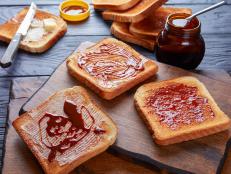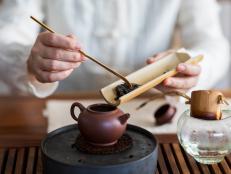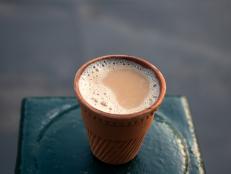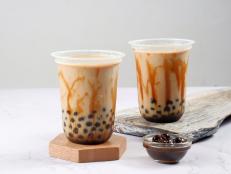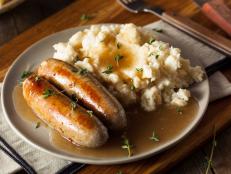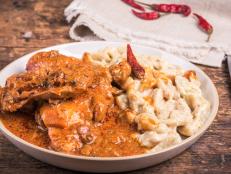10 Do’s and Don’ts of Afternoon Tea, According to Etiquette Experts
Put the pinky down.
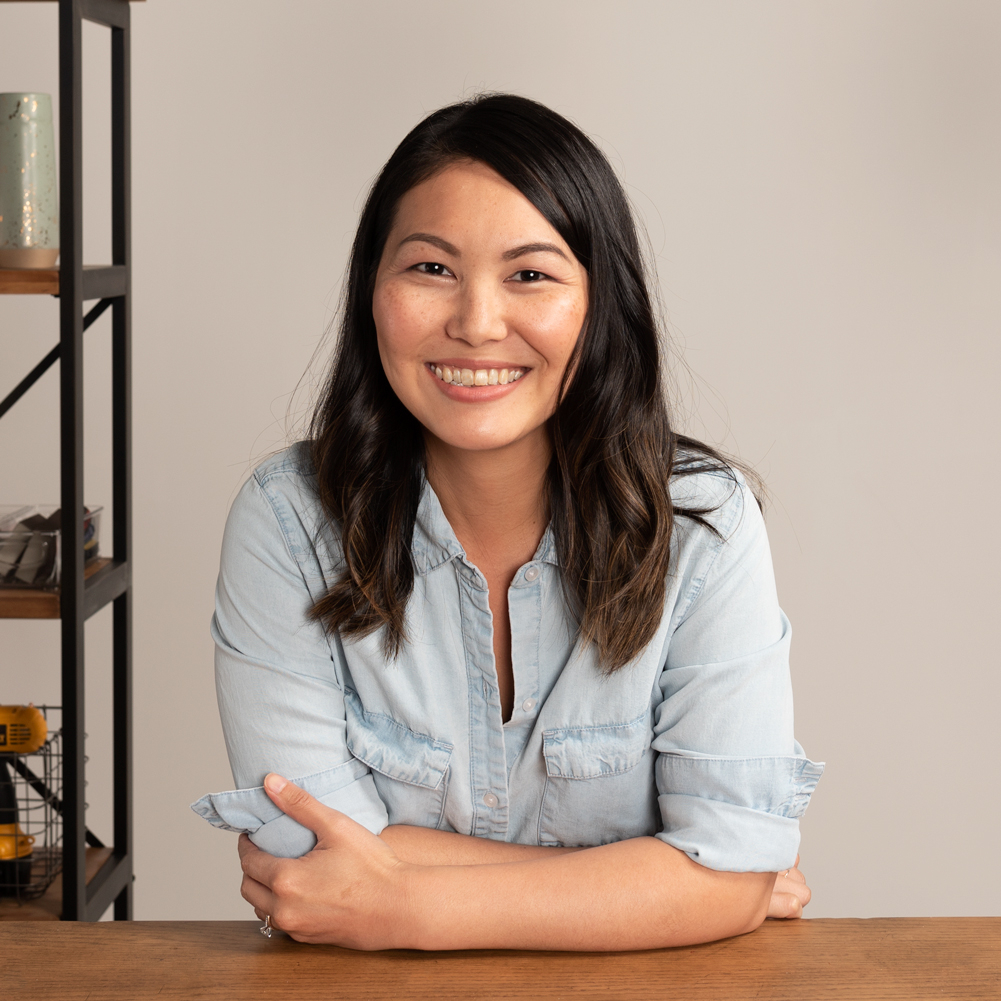

Artit_Wongpradu/Getty
Like many food traditions, afternoon tea has made its way around the globe. British in origin, the mid-day meal consisting of tea, light sandwiches, scones and bite-sized desserts has become popular in many countries, often adapted to suit local tastes. Even if the food served varies or it’s now available at a different time of day, afternoon tea comes with its own set of rules.
“There are a few rituals when it comes to afternoon tea. How you pour the tea, how you use lemon, when milk should be poured… and it all ties back to history,” says Julia Esteve Boyd, also known as The Etiquette Consultant.
For those who are new to afternoon tea — or anyone needing a refresher — here are some do’s and don’ts, according to three etiquette experts.

Sharon Lapkin/Getty
Dress for the Occasion
While athleisure has made its way into most occasions, etiquette experts agree that a bit of dressing up is required for afternoon tea. “Especially if you’re going to a nice establishment, dress a little more formally,” says Boyd. “I would definitely err towards smart casual. You don’t necessarily have to have a shirt and tie, but jeans, trainers and flip flops would not be inappropriate.”
Don’t Call It High Tea
Though the terms are often used interchangeably, afternoon tea and high tea are two different meals. Afternoon tea came to be in the 1840s when Anna, the Seventh Duchess of Bedford, started enjoying tea and small bites in between lunch and dinner. Though Anna originally had afternoon tea by herself in private, it “later carried out to the outside and she invited friends to enjoy this snacktime before dinner,” explains Jamila Musayeva, a certified etiquette consultant. It’d often take place between 3 and 5 p.m. around a low table with everyone seated on comfortable couches rather than a traditional dining table.
High tea, on the other hand, “was something that was enjoyed on a daily basis by the working class,” says Boyd. “It would include more wholesome foods instead and it wasn’t as much of an event.” (Think meat pies washed down with a mug of tea.) And true to its name, high tea happened at a high table, often later in the evening.
But There Are Variations with Other Names
While high tea isn’t the same thing, there are two twists on afternoon tea that you may also hear about: Royal tea includes an additional glass of celebratory champagne along with the usual spread, and cream tea is a stripped down variation that calls for just tea and scones.
Don’t Order Coffee
It may go without saying that afternoon tea traditionally involves just, well, tea. While modern-day versions may offer coffee, it’s very much a faux pas. Tea options are often plentiful, ranging from traditional greens and blacks to non-caffeinated fruit and herbal varieties. No matter what type of tea you choose, they’ll likely arrive as loose leaves steeped in a teapot and not in tea bags. Lemon, milk and sugar will also be offered and each person can customize a cup to their liking.
When It Comes to Pouring Tea, Guests Go First
It’s customary for whoever’s hosting to pour tea for their guests (if no one’s hosting, then you can designate someone for the job). There’s also proper etiquette to follow for the person who’s receiving tea, explains Myka Meier, author of Modern Etiquette Made Easy and The Plaza Hotel’s resident etiquette trainer. “If someone at the table is pouring tea for you and they ask you to pass your teacup, you want to pass the teacup with the saucer to the person pouring, not simply hand them your cup.”
There’s also an order of operations for the liquids. Historically, milk went in before tea. “The working class didn’t have china teacups. They had porcelain and it would crack from hot tea, so they’d pour milk first, then the tea after,” explains Boyd. Of course, that’s less of a concern in modern times so don’t be surprised to see tea in first — even the Queen bucks tradition when it comes to this rule.
There’s a Right (And Wrong) Way to Stir Your Tea
Once you’ve added milk, lemon or sugar to your cup, you may be tempted to give it a big stir, but proper afternoon tea protocol requires a softer touch. “A lot of people stir their tea round and round the cup in a swirling motion, but you shouldn’t do it this way for two reasons,” says Boyd. “One, it can be noisy. The second reason is that teacups are quite light at the top, which means the tea can spill over into the saucer. Traditionally, you use your teaspoon and move it gently backwards and forwards if you’re dissolving some sugar.”
Keep Those Pinkies Down
The story as to how pinkies up became a popular tea-drinking position varies greatly. “If you Google it, you’d find a hundred stories,” jokes Boyd. According to one tale, it was believed that Anne Boleyn, the second wife of King Henry VIII, had six fingers and the last would stick up as she drank tea. Commoners began adapting that practice in an effort to mimic the aristocracy. Today, it’s widely considered a tea-drinking don’t.
To hold a teacup properly, Meier recommends the “pinch and support” method. As the name suggests, it calls for pinching your thumb and index finger together through the handle and supporting the cup with your middle finger, keeping your elbow down.
Start Eating from The Bottom
Food at an afternoon tea is usually served on a tiered tray with items grouped into three categories: savory tea sandwiches on the bottom, scones in the middle and sweets on top. While it may be tempting to kick off your afternoon tea with dessert, it’s actually best to start from the lowest tier. “With each rack, the tastes get richer and richer,” says Musayeva. “You start with sandwiches to clear your palate. They’re quite simple, usually cucumber, egg salad or salmon. If you start with dessert, you won’t enjoy the sandwiches as much since they’ll feel super plain.”
It’s also common courtesy to move through the meal together when dining with others. “The three-tiered rack is usually split between two to three people depending on how hungry the guests are. If you’re enjoying afternoon tea with a group of people, you should pace yourself along with everyone.”
Use Your Fingers
It may seem rude to not eat with a knife and work at a fairly fancy event like afternoon tea, but this is actually a situation where eating with your hands is encouraged. It makes sense when you consider how the meal is traditionally consumed: around a table that’s knee high and often full of teacups and saucers.
“Although an afternoon tea tends to be a more dressy and elegant occasion, you’re actually meant to use your fingers for the majority of the meal, so don't be afraid to do so,” says Meier. “Sometimes throughout the three courses, the only time you may need to use a knife or fork is to put clotted cream and jam on your scone or if you have a piece of cake. Even scones should be broken in half with your fingers!”
Put Your Phones Away
A piece of etiquette that didn’t exist until recently? Cell phone usage. While there are no traditional rules around mobile devices, it’s common courtesy to stay off your phone and remain engaged with your dining partners (after you’ve snapped your requisite photo for social media, of course).
“I always say we shouldn’t have phones at the table. I do understand we’re all very busy and in the world we live in we want to be in contact all the time, but if you’re spending time with somebody, then I think it’s nice to focus on that person and enjoy the moment.”
Related Content:
























